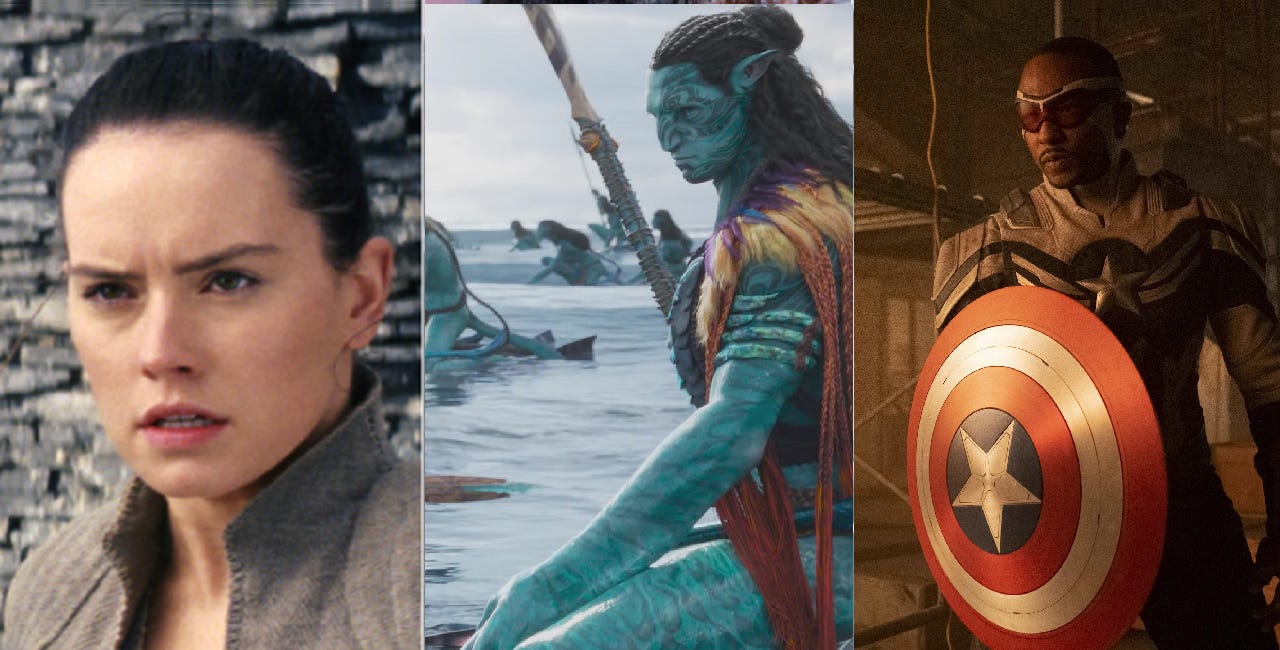Marvel Studios And Walt Disney Pictures VFX Workers Each Move To Unionize
As actors and writers continue to strike, it's empowering all sorts of trades, Hollywood or not
Visual effects crews at Marvel Studios began their vote to unionize on August 21. Ballots are due on September 11 in time for a vote the next day. On August 28, crews of the same field at Walt Disney Studios filed with the National Labor Relations Board (NLRB) for their own election to unionize.
For the Marvel crew, they sent a press release on August 7 which stated “A supermajority of Marvel’s more than 50-worker crew had signed authorization cards indicating they wished to be represented by the International Alliance of Theatrical Stage Employees (IATSE).” Walt Disney Studios’s supermajority came from a group of 18.
Disney Shifts Around Release Dates, Pushing MCU Phase Six Into 2027 And 'Avatar' To 2031
While Tuesday was a big day for Disney on the animation side at the Annecy International Animation Film Festival, its live-action film slate got quite the seismic shift, reportedly due to studios refusing writers’ demands for fair pay and a sustainable career, which led to pauses for
“For almost half a century, workers in the visual effects industry have been denied the same protections and benefits their coworkers and crewmates have relied upon since the beginning of the Hollywood film industry,” said Mark Patch, VFX organizer for IATSE, in a statement announcing the Marvel filing. “This is a historic first step for VFX workers coming together with a collective voice demanding respect for the work we do.” When Walt Disney Studios’s team filed, Patch said “Courageous Visual Effects workers at Walt Disney Pictures overcame the fear and silence that have kept our community from having a voice on the job for decades. With an overwhelming supermajority of these crews demanding an end to ‘the way VFX has always been,’ this is a clear sign that our campaign is not about one studio or corporation. It’s about VFX workers across the industry using the tools at our disposal to uplift ourselves and forge a better path forward.”
These efforts marks the first such instances VFX professionals have taken these steps, as this field, as implied has been non-union since being pioneered during production of the original Star Wars trilogy over 40 years ago. IATSE represents more than 168,000 technicians, artisans and craftspersons working in film and television, but while “positions like production designers/art directors, camera operators, sound, editors, hair and makeup artists, costumes/wardrobe, script supervisors, grips, lighting, props and paint, among others, have historically been represented by IATSE,” the release remarks, visual effects crews have not. The reports of crunch that Marvel’s VFX workers have had to endure have become quite notorious in the last year. It includes complaints about the studio’s demanding post-production schedules, and concerns such as ceaseless overtime, recurrent understaffing and having to submit low-grade work due to constantly changing deadlines.
VFX coordinator Bella Huffman mentioned that turnaround times, protected hours, and pay equity are benefits the union provides that those in visual effects don’t have, which also includes fair compensation for all hours worked, adequate health care, retirement benefits, and more generally the same rights and protections that those already represented by IATSE. Like with what the striking actors in SAG-AFTRA and writers in the Writers Guild of America are seeking, Huffman declares “Visual effects must become a sustainable and safe department for everyone who’s suffered far too long and for all newcomers who need to know they won’t be exploited.”
On the Disney team front, Monday’s filing means a labor board election can begin as early as two to three weeks. If a majority vote in favor of unionizing in that election, the studio would be mandated to start good-faith negotiations for a contract covering those workers as a unit.
Disney+ Sends 'The Spiderwick Chronicles' Packing Despite An Already Completed Season
Disney+ will not be the home of the live action series adaptation of The Spiderwick Chronicles, it has been revealed. It was one of several children’s book adaptations ordered for the streamer over its existence. This is despite the eight-episode series, more probably intended just as a first season. from






